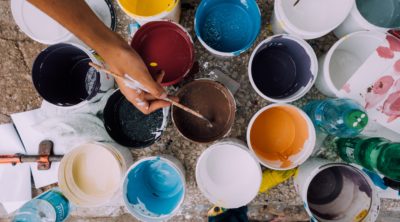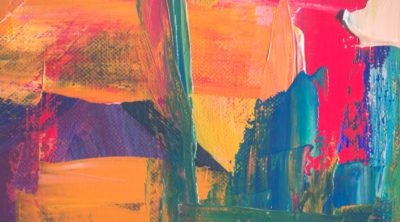
Art is complex. Art is beauty. Art is varied. Visual art is divided into abstract and figurative. Figurative art is also known as representative art. We shall learn about representational art with examples in this ArtHearty article.
The Thin Line of Resemblance
Though representational and nonrepresentational art are distinct, and are rather accepted as opposing art forms, there still exists an ambiguous similarity. Representational art contains some traces of abstraction.
Representational Art
The word ‘representational’ originates from the word represent, which means to denote. Likewise, representational art, by definition, represents the art that finds resemblance with the real world. The onlookers of this art form can associate the elements with actuality. And it is this feature of this art form that has garnered appreciation of people from all walks of life. This is the most superior of meanings that could be associated with representational art.
Nonrepresentational art, on the contrary, is that art form bears no elements that has similarity with the real world. It allows room to its viewers to interpret a piece of art in his own way. It is the artist’s way to emote his own experiences, or experiences that he has known in his life. Such works are laden with the artist’s perspective of the object. As far as the nonrepresentational history is concerned, we can infer that in the last part of the 19th century, emerged a pressing need to have an art form that would stand in total contrast to the stark depiction of reality. Thus, came into the fore, non-representational art, which in itself is a broad terminology, and has within its ambit, a plethora of elements that is beyond the scope of this article.
Having understood these, we can say that most paintings and sculptures can be divided into either representational art or non-representational art. Well, the answer is certainly an affirmation of the question.
Representational art is also known as figurative, and nonrepresentational art is known as abstract. Figurative art is directly influenced by real-life sources, while the abstract art is an embodiment of the artist’s creative waves and the interpretation by the viewers. This phenomenon resulted from artistic independence. Representational art showcases humans, elements in nature such as trees, birds, flowers, etc.
Origin
Origin of Representational Art
- The very first representational art dates back to the prehistoric times, when the prehistoric men carved paintings on the caves.
- The purpose of it was to represent human or animal form. Venus of Willendorf is one of the living examples of a piece of representational art.
- Apart from this, there are also opinions that Australian rock art discovered on the caves may also be one of the oldest forms of figurative art attempted by humans.
Let’s recognize some of the characteristics of this art form in the sections given below, and also take a look at some of the marvels of this art form.
Characteristics of Representational Art
Statuettes Portraying Representational Art

Antique Greek Sculpture Depicting Representational Art

Apollo’s Statue

Figurine Showing Representational Art

Venus of Willendorf
Drawings/Paintings Portraying Representational Art

Ancient Cave Paintings

Ancient Stone Painting

The Last Supper Painting

Woman’s Painting – Representational Art

Memories of Corfu Painting

Aerial View Of a Bay
A representational artist is an observer. He executes and reflects in his art form, what he sees through his eyes and captures in his mind. But, a room for discretion is always left, wherein he alters with the actual object. Thus, representational art is correlated to observation.
Representational art has within its ambit an imagery, which is brought about with the help of mental process of representation. The minimum requirement for this type of art is a piece of object, which could be replicated.
Figurative art is an important characteristic of representational art. The word in itself is an explanation of the characteristic; i.e., it is influenced by a figure. In fact, this is the most important characteristic because without this, the art would not retain its meaning.
Some of the key features that figurative art has to take account of is the correct usage of elements such as the combination of light and shade, color of the object, and the tone. As it is the replication of the figurines, therefore, the piece must highlight the same to the maximum.
The characteristic feature of representational art is based on the viewpoint of a single focus, unlike representational art which follows no clear distinct focus.
What we mean by a single focus is that the artist tries to view the object from a single viewpoint so that his replication is closest to the original.
Edward Hopper was an enthusiast of representational art. He is considered as one of the best examples of America’s most prominent realistic painters.
A burning example of representational art is Renaissance art. This art form was driven by the principle of humanism. The core belief of humanism was to represent elements that were close to the real life, rather than symbolism. Mona Lisa of the Renaissance period is an example of representational art form.
Fresco and tempera are two great techniques that were highly practiced in representational art. These techniques were used by Florentine artists. Michelangelo was one such Florentine artist.
The influence of industrial revolution on this art form was innate. Depiction of reality, one of the many characteristics of representational art, escalated a peak at that time.
Color in this art form was held at the helm. It was utterly important to depict the object in the same color as seen in reality.
Another noteworthy characteristic of representational art is the impressionist mode of painting. This developed during the period of Impressionism. The point that this method emphasized on is on the use of accurate brush strokes that would define reality in toto.
As far as categorizing representational art is concerned, there isn’t much scope to diversify it into categories and groups. One straight and simple reason for this is that the artist has to cling to his depiction of the object in its true color, form, and texture. There is no room for variation, and hence, varieties would be vague in this context. So, in conclusion, it could be safely said that representational art requires great skills and a strong sense of color, tone, and light, apart from drawing skills.


